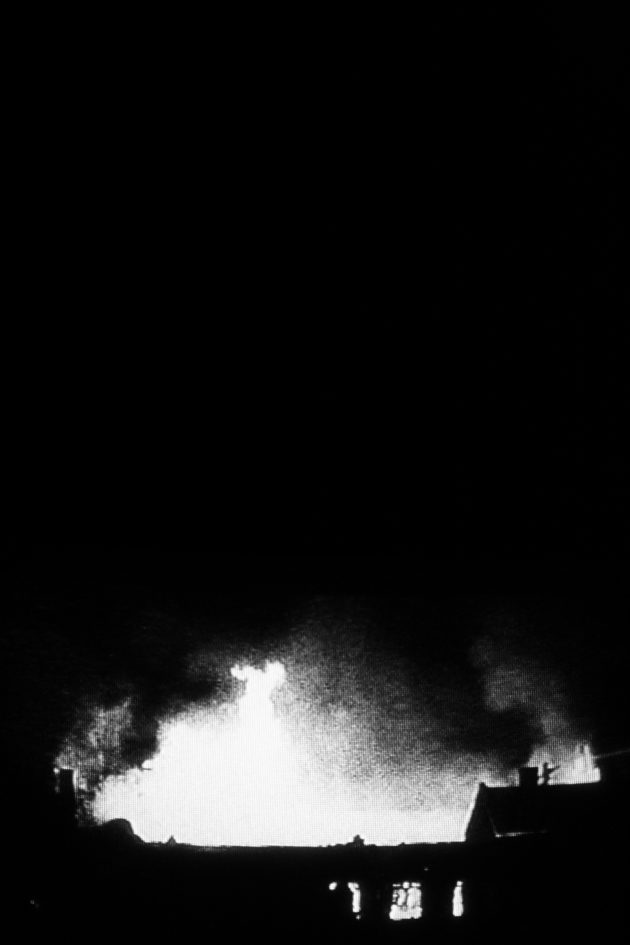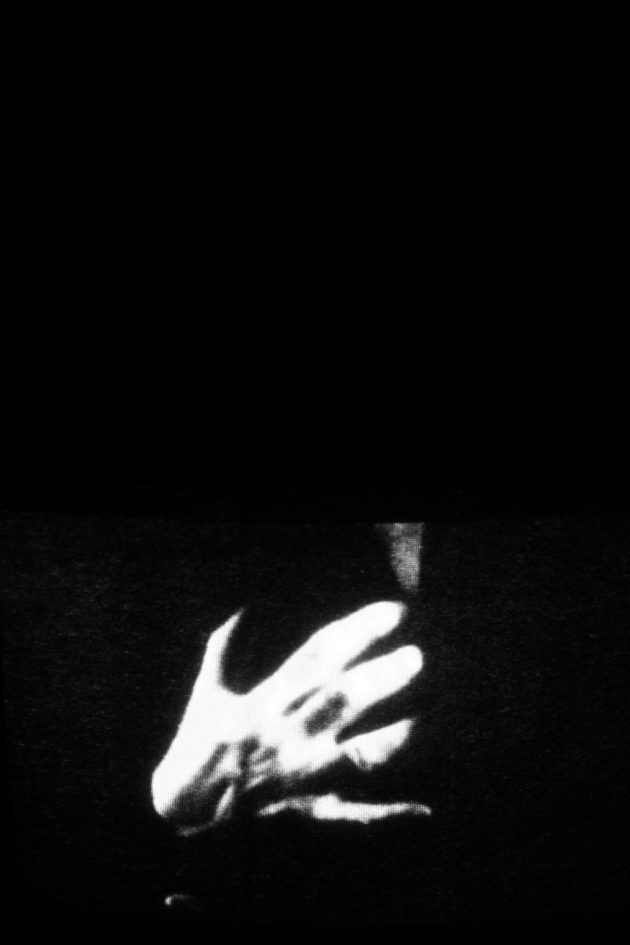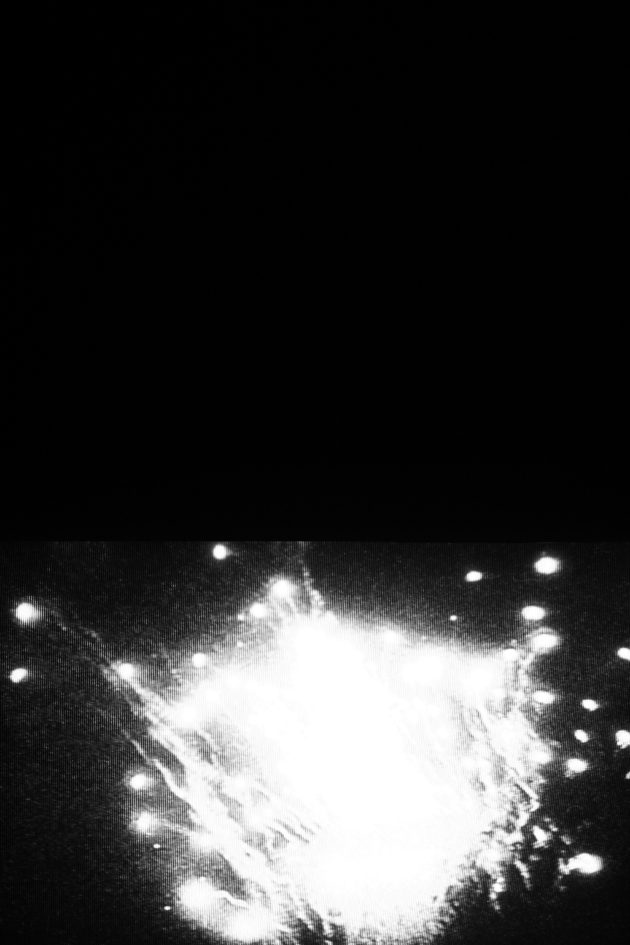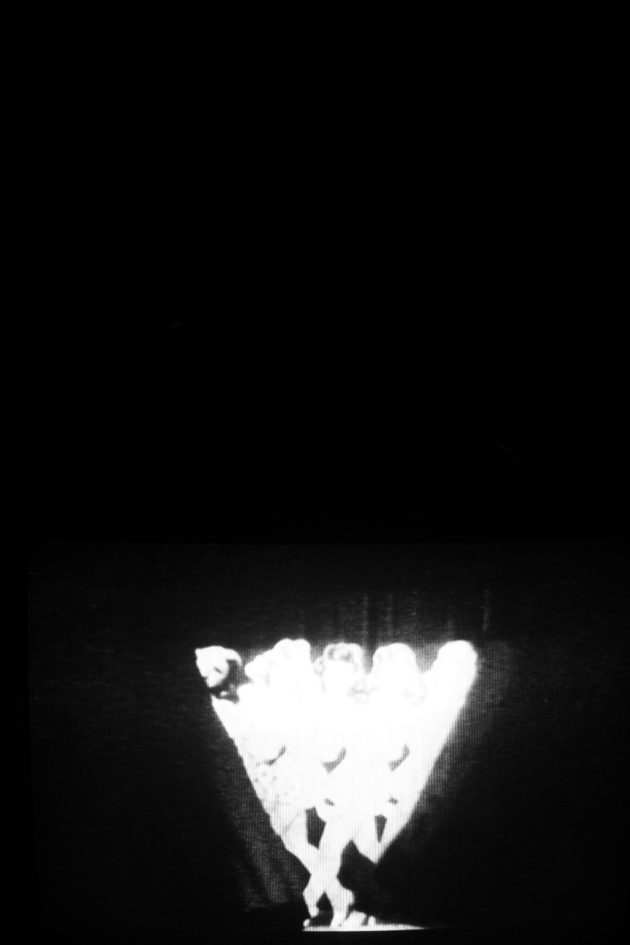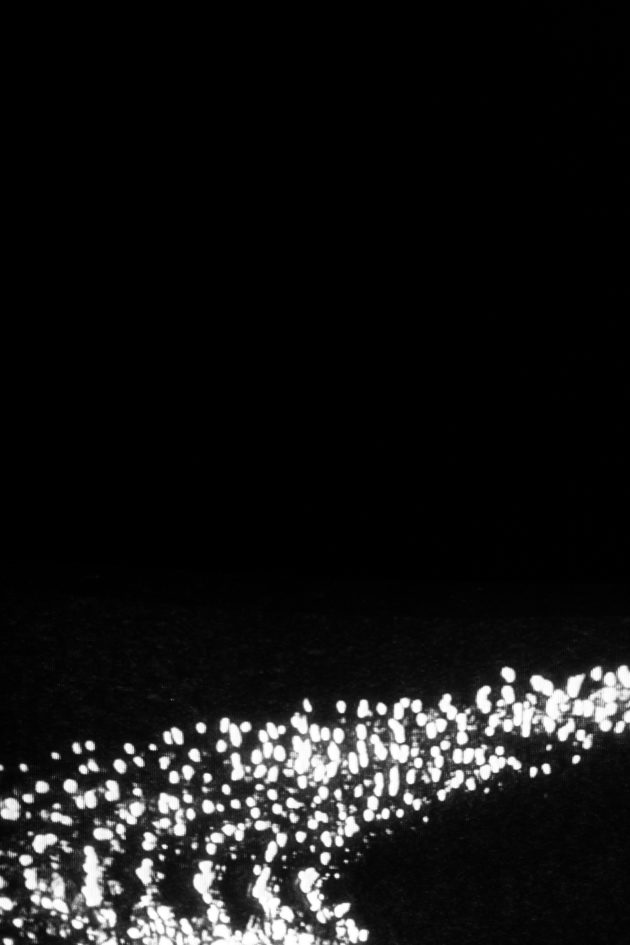White Dreams
White dreams. The title of a series of photographs from which are extracted the two boards presented here. At the head hooded, barely raised from the ground, answers a trick cloud of white smoke, also weighed down, crushed by the black mass of a Plexiglas plate. The images faintly pierce the blackness surrounding them, helped by the pale light of a single neon. An ar-peggio gives the pulsatile cadence to these apparitions.
The screen of the dream. Bertram D. Lewin describes the ideal dream as a white screen that represents the sleeping dreamer’s desire. In the White Dreams series, the white patterns of the images occupy restlessly the bottom of the screen, leaving most of it blank, black. The series unrolls its vignettes, banals and brutals, up to a white dazzle, a disappearance of any image: a finally possible sleep.
Or the white roof of the insomniac. For the one who doesn’t sleep, the wake is a nightmare and the awakened dream is none other than that of finally sleeping of a white slumber, in order to stop the succession of images. But to the reassuring disconti-nuity of the cutting wake / sleep, insomnia opposes a continuity without respite. The one who has no rest is a wanderer of the night, whose open eyes are, as Cioran writes, privileged witnesses of despair. « In hell, we never sleep ».
News from hell. The register of deafly brutal images extends into filmed sequences. A ballet of fighter planes, kinetic echo to the static smokes. A skull agitated in the flames with the help of a poker: infamy made to what is here evidently no longer a face, to what had already been denied before the killing by the covering of a coarse canvas.
And the skull dissected. It can’t be a vanity. The Memento Mori was a warning to a man who was becoming a subject. Here, the cavities filmed beyond any exhibition bear the trace of any dream, any death that could be the characteristic of a subject. This open, splitted skull is no longer the place of any mystery of consciousness when it is reduced to an object on which the wills of control are exercised. The dream of white became a totalitarian nightmare: 1984, for fiction, 1939, for reality. She had anticipated.
Under the Third Reich, even the dream was no longer a private space, but the nocturnal extension
of the trauma experienced during the day and the alienation of the totalitarian system. The dream of being always whiter than snow, always less suspect, always less a subject, contaminates the brains. Get into the minds. With his eyes open, Steeve Bau-ras photographs obscure skies, ashen floors, faceless heads, which seem to come from some dream or nightmarish fiction. These images are however all documentary fragments, reworked, distorted by the techniques of reproduction that he inflicts on them. By these processes, he makes the images stir, and awakes them from oblivion.
Elise Vandewalle

